Football in Norway is an incredibly popular sport to watch and participate in, yet the professional league suffers against foreign rivals. Here’s what you need to know about Norwegian football.
The world’s most popular sport, the beautiful game, jumpers for goalposts. Football brings people together the world over, and it does the same in Norway.
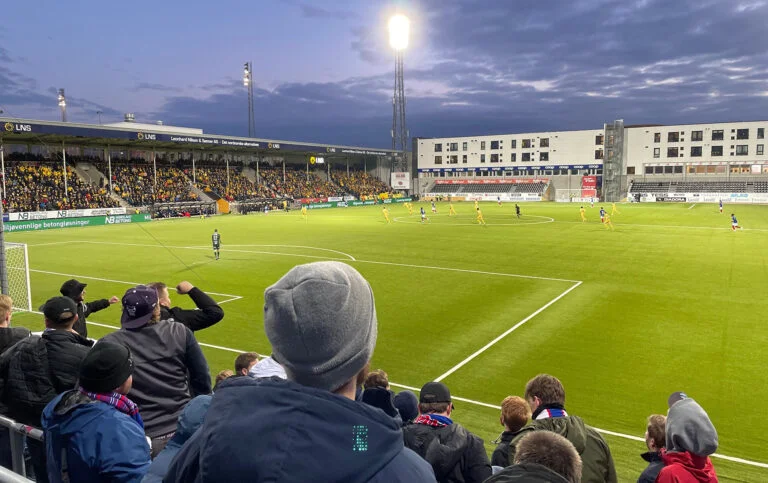
While youth grassroots football in Norway is incredibly strong, there is also a much more global perspective on the professional game than there is in other countries, especially in England.
Table of Contents
Why I watch Norwegian football
This is a question I have been asked more times than I can remember, including by fellow supporters of my own team! The reason is actually pretty simple. I enjoy the match day experience, especially at away games.
The technical quality of the game isn't as high as other leagues. But for me that's secondary to the supporter experience of attending games at a Norwegian football stadium.
It's hard to quantify but there's a lot to be said for being part of something and living through the highs and lows that a football club inevitably provides. Scientists have even shown that the supporter experience is good for you!
While there is not much of an away day culture in Norwegian football (more on that later), it has allowed me to better understand life in small towns such as Molde, which pin so much of their modern identity to their football clubs.
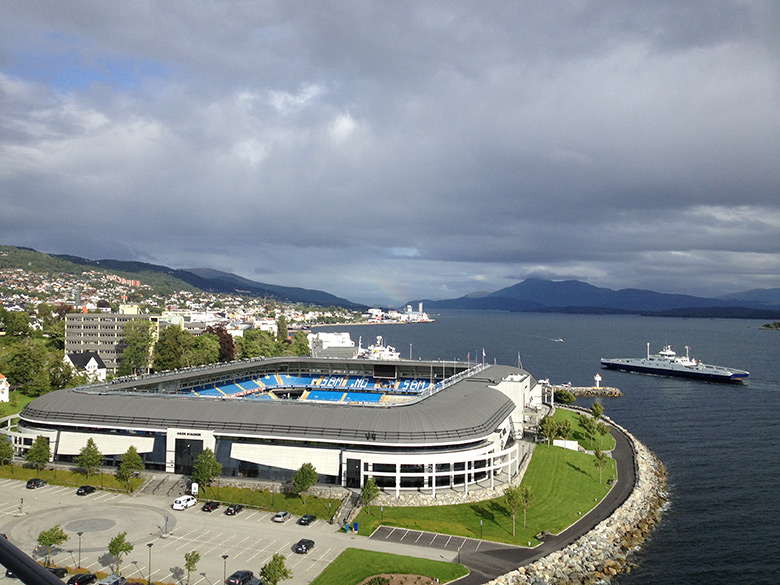
I'm also fortunate in that the job I do for a living allows me to travel around Norway extensively, and I'm often able to time those trips to coincide with a football match.
The dominance of English football in Norway
When I first moved to Norway, this quickly became apparent. I would ask who someone supported, and even if the person supported a Norwegian team, they would always lead with their foreign (usually English) team…
“Manchester United and Lillestrøm”
“Liverpool and Brann”
…and so it went on. I assumed this was because I was clearly an Englishman asking the question, but gradually I came to understand that part of the identity of being a Norwegian football fan–in most cases–is supporting an English club first and foremost.
However, after several years of following my adopted Norwegian club, Vålerenga, I have stumbles upon many people that place the domestic game first and foremost.
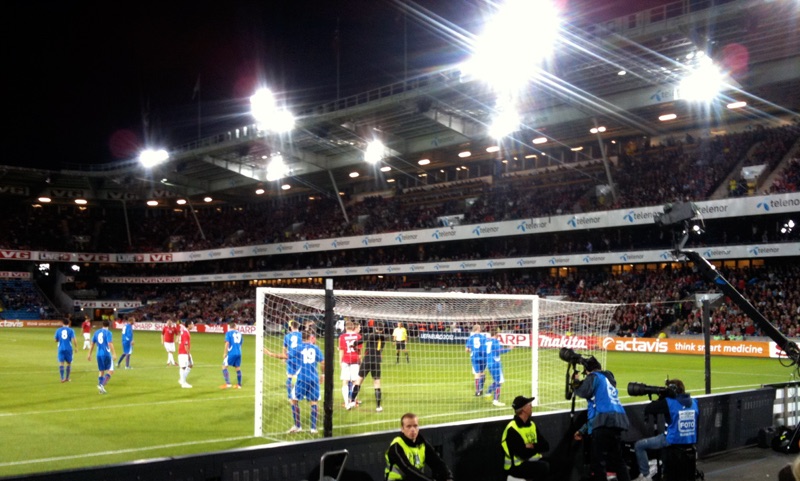
But there's no doubt that the success of the Norwegian league and individual clubs is held back by the popularity of English football.
Differences in Norwegian football
Perhaps the biggest difference is that Norwegian football is played as a summer sport. Because of the weather in Norway, the season typically runs from late March to early November.
Even with the long winter off-season, there are still plenty of games at either end of the season that take place in cold, snowy conditions. That's especially true at northern clubs including Tromsø and Bodø/Glimt.
International players
Those who follow international football will quickly notice the lack of Norwegian internationals playing in the domestic league.
While there's no shortage of Norwegian players playing in Norway, foreign clubs quickly snap up the best Norwegians. Teams playing in Europe's ‘second tier' leagues in the Netherlands or Belgium are a top destination for talented Norwegians.
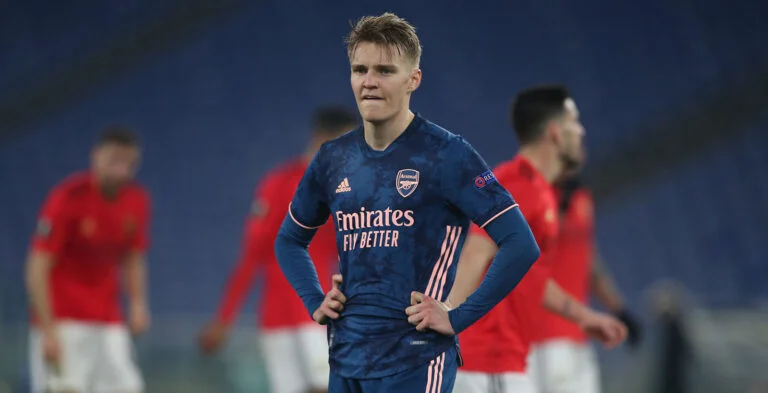
Perhaps the best known move was Martin Ødegaard to Real Madrid when he was just 16. Erling Braut Haaland moved as an 18-year-old to Austria, before moving on to the German league prior to his big money move to Manchester City this summer.
Clubs from richer European leagues extensively scout matches in Norway. This makes Norwegian clubs are often a popular choice by younger players from outside Europe trying to break in to the European game. This leads to a more international make-up of many clubs than you might first expect.
Away fan culture
Something that's also quickly noticeable as a fan is the relative lack of away fan culture. That's not to say there aren't away fans. But there are noticeably less than at a typical game in Norway than in England.
In most cases, the reason is simply distance. Most away games involve substantial distances that are too far too drive. This means fans must fly, often on two planes, just to attend an away match.
Given that the majority of games take place at 6pm of 8pm, it's not always possible for fans to get home on the same day, even by flying. Add a hotel onto the cost of flights and it's soon obvious why away fans are few and far between.
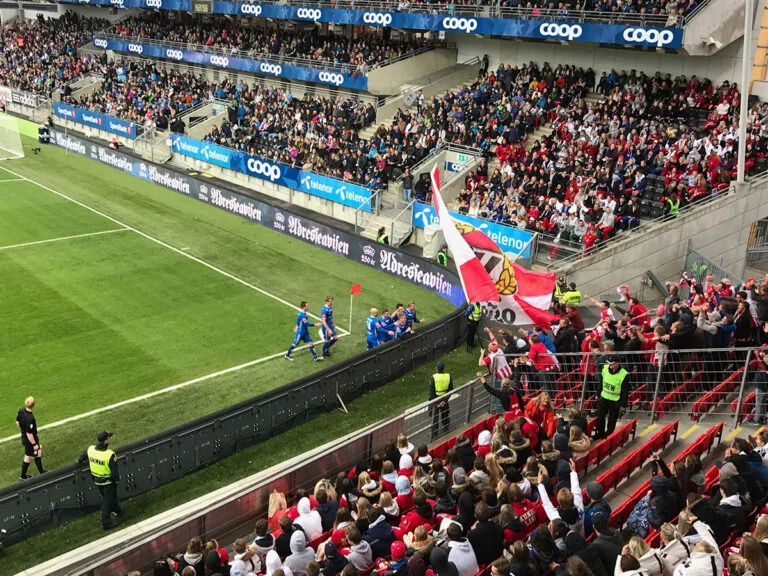
There are exceptions, of course. For example, at Vålerenga's Intility Arena, visiting teams often have more away fans than usual. The reason is simple: the relatively high number of supporters of other teams from around the country that now live and work in Oslo!
Boxing Day on 16 May
One of the biggest days in the English football calendar is Boxing Day or 26 December. It's a day that typically sees bigger crowds and one of the first fixtures fans look for when the games are announced.
In Norway, the equivalent day is the 16 May, the evening before the Norwegian Constitution Day. There's a full program of Eliteserien games on 16 May, and games are often more local where possible.
Both these factors mean the 16 May games are often the best attended games of the season.
Women's football in Norway
I have no data to back it up, but I feel that women's football in Norway has more of a focus than in many other countries. Since I left England, the women's game has received much more attention, so maybe times are changing.

Norwegian women's football received a lot of attention in 2018 when Ada Hegerberg won the first female Ballon D'or, an award presented to the world's best player.
Just last weekend, the Brann v Vålerenga women's league match set a new league attendance record in excess of 10,000. That's a bigger crowd than most men's games across the top league.
Youth football in Norway
There is huge participation in football (and other sports) among children and young people across Norway. This activity is enabled by substantial volunteer activity and supported by charities including the Zuccarello Foundation.
Believed to be the world's biggest football tournament, the Norway Cup is an annual event for youth football clubs in Ekeberg, Oslo. Teams travel from all over the world to participate, including Zambia.
Structure of Norwegian professional football
Norwegian men's football is structured in a similar way to many professional league systems across Europe. The top level of men's football is named Eliteserien.
Eliteserien
During the summer season, 16 teams play each other home and away for a total of 30 matches per club. The team with the most points wins the league title.
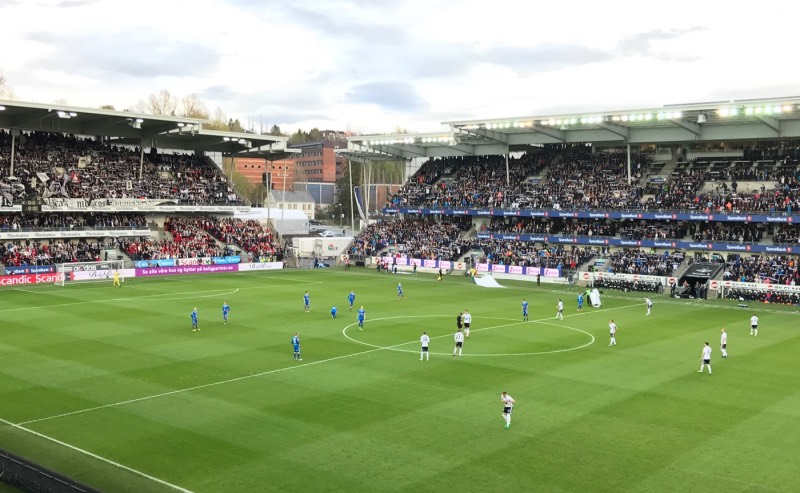
You'll often hear ‘medals' referred to when discussing the league. That's because the teams that finish second and third qualify for European football. So, a top three league position is generally considered a success.
The two teams with the least number of points are relegated to the second-tier. The third-worst team enters the play-off final for the right to stay in Eliteserien.
OBOS-ligaen
The second-tier of Norwegian football is known for sponsorship reasons as OBOS-ligaen. It also contains 16 teams, playing each other home and away.
The top two are promoted to Eliteserien, while the teams finishing in places three to six enter the play-offs. The winner of the play-off round plays the third worst team in Eliteserien for the right to play in the top tier the following season.
At the bottom end of OBOS-ligaen, the worst two clubs are relegated and the third worst team enters a play-off tournament.
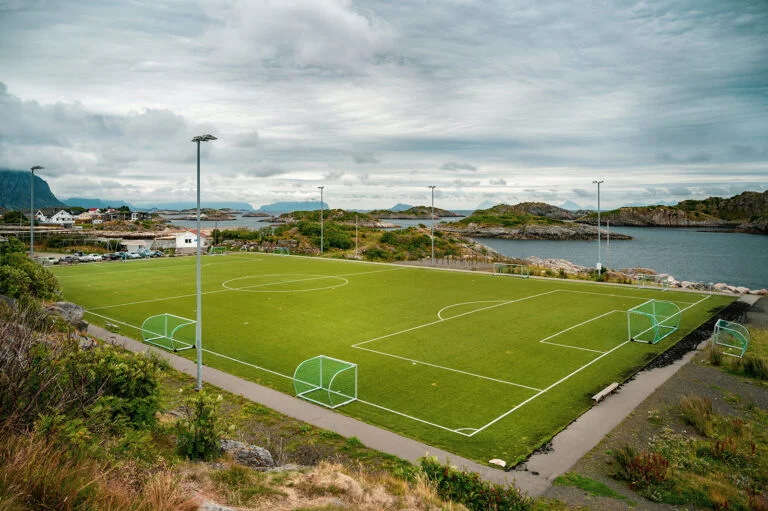
The lower leagues
Below the OBOS-ligaen, the leagues are split into regional divisions. These divisions also contain the second teams of many professional clubs.
Norwegian Cup
Each year, most clubs in Norway regardless of size enter the Norwegian Cup, broadly similar to the FA Cup in England. The cup retains significant prestige in Norway. To win it is generally considered a big deal by players, fans and media alike.
There are some differences between the Norwegian Cup and the FA Cup that I really like. Firstly, Eliteserien clubs are always drawn away from home in the early rounds. As they are also regional draws, this usually guarantees a big crowd and a bumper payday for the smaller club.
Norway's biggest professional clubs
For the last two seasons, Bodø/Glimt have won the league title, the first club from Northern Norway ever to do so. Together with the success of Molde throughout the 2010s, the two clubs have provided a welcome change to the dominance of Rosenborg.
Based in Trondheim, Rosenborg have won the Norwegian title a record 26 times. That record includes 15 of the 17 available titles between 1988 and 2004, and four consecutive titles between 2015 and 2018.
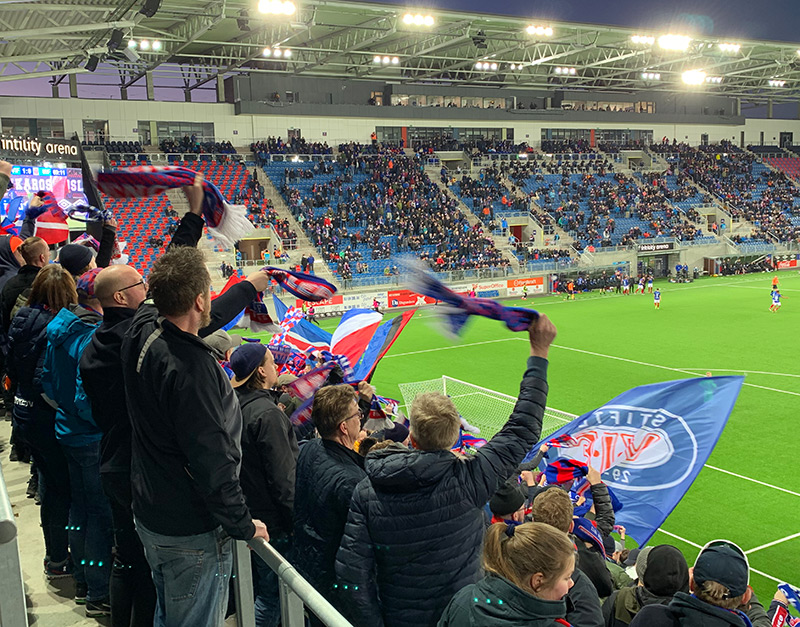
The main clubs in Norway's other big cities—Vålerenga in Oslo, Brann in Bergen, and Viking in Stavanger—have all been relatively starved of success in recent years. Brann last won the title in 2007 and Vålerenga in 2005, although Viking won the Norwegian Cup in 2019.
Norway men's national team
Having not qualified for a major tournament since the year 2000, it's fair to say that Norway's national team struggles to meet expectations.
Many hope the current generation featuring world-class players Erling Braut Haaland and Martin Ødegaard will change that.
Disappointing results against Turkey and Latvia cost Norway a place in the 2022 World Cup in Qatar, so sights now turn to the qualifying tournament for Euro 2024 in Germany. The draw for the qualifying stage will take place in October 2022.
Norway women's national team
In stark contrast to the men, Norway's women have held European, World and Olympic titles, although success has been thin on the ground in the last 10 years.
The pinnacle of their success came with the World Cup win in 1995. Goals from Hege Riise and Marianne Pettersen saw Norway beat Germany 2-0 to win the title.

